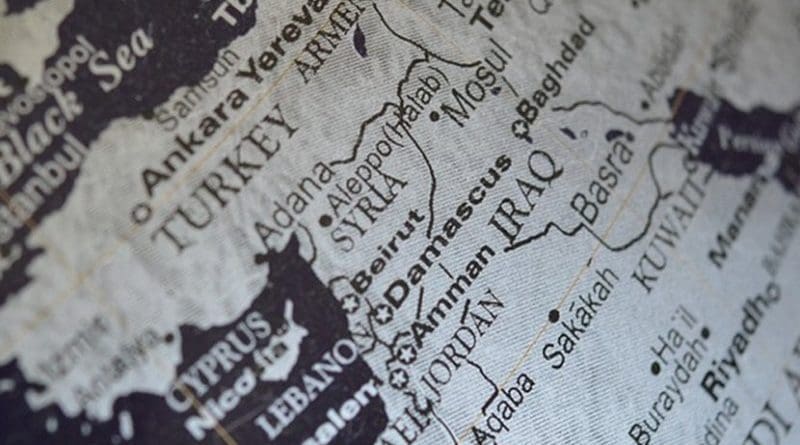The Renaissance Of The Arab World?
The unprecedented wave of protests which has engulfed the Arabian states of the Middle East and North Africa over the past few weeks is being extended ever more.
After Tunisia and Egypt in which millions of revolutionary protesters succeeded in ousting the western-installed puppets Zainal Abidin bin Ali and Hosni Mubarak, several nations of the Middle East, including Yemen, Algeria, Jordan, Bahrain, Oman and Libya joined the communal movement of the Arab world to put an end to the longstanding U.S.-backed autocracy in the region.
The Arab uprising in the Middle East which seems to have been inspired by Iran’s Islamic Revolution of 1979 has only one unequivocal and unambiguous objective: the obliteration of tyranny and despotism and the establishment of democracy and freedom.
As one looks back at the sequence of events and incidents, which led up to the Islamic Revolution of Iran in 1979, one can clearly figure out that the stance of the White House concerning its allies in the Middle East has always been the same. When the people of Iran first took to the streets of Tehran en masse to call for the abolition of Mohammad Reza Shah’s monarchy, Jimmy Carter assertively backed his stalwart ally, the “Gendarme of the Persian Gulf”, unconditionally assuring him that the United States would stand by him and his government; however, as the demonstrations and rallies overwhelmed the whole country and the people began to call for the homecoming of their exiled, charismatic leader, Imam Khomeini, Carter gradually found out that it was time to change direction and leave the unfortunate Shah alone.
In fact, the American government, which is known for its miscalculations and erroneous analysis of international developments, had underestimated the possibility of a revolution in Iran, which could throw out their best friend in the Middle East. A CIA analysis in August 1978, just six months before the Shah fled Iran, had concluded that the country “is not in a revolutionary or even a pre-revolutionary situation.”
Historical evidence and documents demonstrate that the United States preferred to follow a policy of ambiguity and uncertainty with regards to Iran’s revolution. At the same time it was showing a superficial and cosmetic sympathy with the ill-fated Shah, the U.S. government was almost convinced that the revolution of the Iranian people was unstoppable. That was the reason why Jimmy Carter and Henry Kissinger quarreled in the White House — an argument, which illustrated the the wide gap between the elites at the top of the US pyramid of power.
In his memoirs, former US ambassador to Iran William H. Sullivan, recalls that the US national security adviser at the time, Brzezinski, “repeatedly assured [Mohammad Reza] Pahlavi that the US backed him fully.” On November 4, 1978, Brzezinski called the Shah to tell him that the United States would “back him to the hilt.” However, at the same time, the White House had reached the conclusion that a popular revolution was unavoidable in Iran and the last option would have been to stage a “last-resort coup d’état to install a new US-linked stooge in Iran, rather than give up power to an Islamist leader. At any rate, with its ambivalent and capricious stance, the United States failed to keep its staunch ally in power and eventually yielded to the will of the Iranian nation.
The same happened in the 2011 Egyptian revolution. In the first days of the demonstrations in Tahrir Square, US President Barack Obama called on Hosni Mubarak to remain in power, but implement the soft reforms, which the people were calling for.
At the same time, US Vice President Joe Biden who is known for his strong pro-Zionist stance, described Mubarak as ‘a strategic friend of the US’ and backed his attempts to normalize ties with Israel.
“[Hosni Mubarak] has been an ally of ours in a number of things. And he has been very responsible on, relative to geopolitical interest in the region, the Middle East peace efforts: the actions Egypt has taken relative to normalizing relationship with Israel,” Biden said.
As the demonstrations continued despite the Egyptian military’s efforts to quell them, and even grew, turning international attention to Tahrir Square, President Obama softened his tone and asked Mubarak publicly to step down and hand over the power to a military coalition. This blatant change of tone brings to mind the US stance on Iran’s Islamic Revolution.
Now, the Middle East has been transformed into a boiling kettle, ready to explode — a turn of events never before seen in the region. 300 people have so far lost their lives in their pursuit of a free and democratic Libya. The Jordanian government has allowed the anti-government protesters to stage rallies and demonstrations without needing government-sanctioned permission. King Abdullah II has announced that he will be forming a new government. Bahrain has acceded to the calls of its opposition parties to empty the main streets of Manama and the Pearl Roundabout from military forces and police troops. The people of Algeria have successfully convinced the government of Bouteflika to end the 19-year state of emergency in the near future and take care of the people’s main demands regarding unemployment, inflation, poor living conditions and violation of human rights.
The Arab world uprising indisputably indicates that the people of the region are being awakened from their slumber of ignorance and indifference. They will no longer tolerate tyrannical governments, which confiscate and sequester their rights. They want freedom of expression, improved living conditions, expanded relations with the outside world and the right for self-determination. The Middle East revolution shows that the people in the region are no longer indifferent to their destiny.
They want the rights they have been deprived of for decades.
This article also appeared at Press TV.

